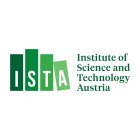
Institute of Science and Technology Austria
The Institute of Science and Technology Austria (ISTA) in Klosterneuburg on the outskirts of Vienna is a PhD-granting research institute. Opened in 2009, the Institute focuses on basic research in the natural sciences, mathematics, and computer science. ISTA employs professors according to a tenure-track model as well as postdocs, and PhD students in an international graduate school. In addition to its commitment to basic research, which is solely curiosity-driven, the Institute holds the rights to all resulting discoveries and promotes their exploitation. ISTA currently has 76 research groups conducting basic research in the fields of mathematics, computer science, physics, chemistry, neuroscience, biology, earth sciences and astrophysics. These groups cover both theoretical and experimental research. An essential factor for the Institute’s success is that traditional boundaries between disciplines are broken down and cooperation between groups is strongly encouraged. By 2026, up to 90 research groups will work in ISTA’s international environment with state-of-the-art infrastructure. The Institute expects to reach its full capacity of 150 research groups by 2036.
Main tasks in the project
ISTA will contribute to Task 1.4: “Enabling technology: noise-protected architectures and novel concepts” by designing, fabrication, characterization, calibration, and benchmarking of qubit circuits in novel parameter regimes. This includes the development of switchable circuits that offer new qubit control, protection and storage capabilities, e.g. on base-band flux pulses. For this we will explore different superinductor technologies such as Josephson-junction arrays and geometric spiral inductors. ISTA will also contribute to Task 2.1: “Develop fabrication technology allowing for high-Q circuits”. To minimize capacitive losses ISTA will explore different materials such as Al, Nb and NbTiN. We plan to use suspended superconducting circuits as sensitive probes to systematically test surface losses that inform the design and material choices of larger scale conventional circuits.